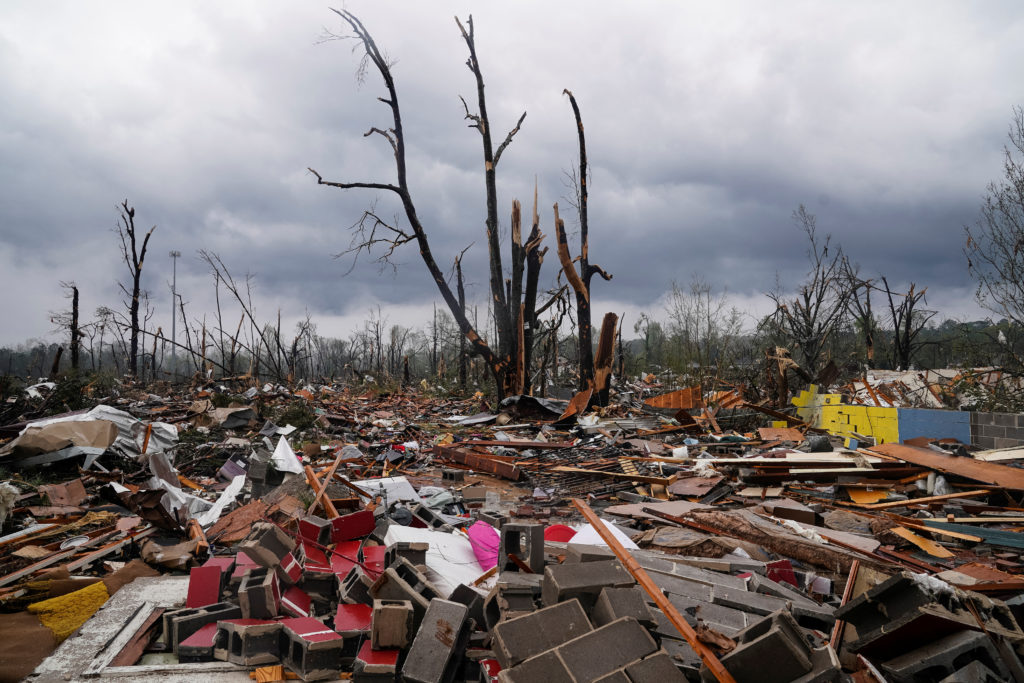Tornadoes are a terrifying force of nature, capable of wreaking havoc on communities in mere moments. One such event that shook the city of Little Rock, Arkansas, serves as a stark reminder of the importance of preparedness and quick thinking in the face of disaster. In this beginner’s guide, we’ll explore what you need to know to survive a Little Rock tornado, from understanding tornado basics to creating an emergency plan for you and your loved ones.
Understanding Tornado Basics
Before we delve into survival strategies, let’s grasp the basics of tornadoes. A tornado is a violently rotating column of air extending from a thunderstorm to the ground. They can occur anywhere in the world, but the central United States, including Arkansas, is particularly prone to these destructive storms.
Tornadoes vary in size, intensity, and duration, but they all pose significant risks to life and property. The Enhanced Fujita (EF) scale categorizes tornadoes from EF0 (weakest) to EF5 (strongest), based on the damage they cause. Little Rock has experienced tornadoes across the EF scale, emphasizing the importance of readiness for all residents.
Creating an Emergency Plan
Preparation is key to surviving a tornado. Start by creating a comprehensive emergency plan for you and your family. Identify a safe shelter in your home, preferably a basement or storm cellar. If those options aren’t available, choose an interior room on the lowest level, away from windows, such as a bathroom or closet.
Ensure everyone in your household knows where the designated shelter is and how to access it quickly. Practice tornado drills regularly, so everyone is familiar with the procedures. Additionally, establish a communication plan in case family members are separated during a tornado. Designate an out-of-town contact whom everyone can check in with to confirm their safety.
Assembling an Emergency Kit
In the event of a tornado, you may find yourself without power or access to essential supplies. That’s why it’s crucial to assemble an emergency kit well in advance. Your kit should include:
- Water and non-perishable food: Aim for a three-day supply per person.
- Flashlight and batteries: Ensure you have a reliable light source.
- First aid kit: Include bandages, antiseptic wipes, and any necessary medications.
- Blankets and clothing: Stay warm and comfortable in case of prolonged power outages.
- Battery-powered or hand-crank radio: Stay informed about weather updates and emergency instructions.
Keep your emergency kit in an easily accessible location, such as your designated shelter area, and periodically check and replenish its contents.
Staying Informed
Stay informed about weather conditions in your area by monitoring local news broadcasts, weather apps, or a NOAA Weather Radio. Pay attention to tornado watches and warnings issued by the National Weather Service. A tornado watch means that conditions are favorable for tornado formation, while a tornado warning indicates that a tornado has been spotted or indicated by radar and immediate action is necessary.
When a tornado warning is issued for your area, take it seriously and seek shelter immediately. Don’t wait until you see or hear the tornado; by then, it may be too late to reach safety.
During the Tornado
When a tornado is imminent, take shelter in your designated safe area and follow these guidelines:
- Get low: If possible, lie flat on the ground and cover your head with your arms and hands.
- Protect yourself: Use pillows, mattresses, or heavy blankets to shield yourself from flying debris.
- Stay informed: Listen to a battery-powered radio or your smartphone for updates on the tornado’s progress.
Remain in your shelter until the tornado has passed and it is safe to emerge. Exercise caution when venturing outside, as downed power lines, broken glass, and other hazards may pose risks.
After the Tornado
Once the tornado has passed and it’s safe to do so, assess your surroundings for any damage or injuries. Check on your family members, neighbors, and pets, offering assistance if needed. Be mindful of hazards such as gas leaks, damaged electrical lines, and unstable structures.
Contact emergency services if you require assistance or encounter life-threatening situations. Document any damage to your property for insurance purposes, taking photographs if possible.
Conclusion
Surviving a Little Rock tornado requires preparation, vigilance, and quick action. By understanding tornado basics, creating an emergency plan, assembling an emergency kit, staying informed, and knowing what to do during and after a tornado, you can increase your chances of staying safe during these tumultuous events.



